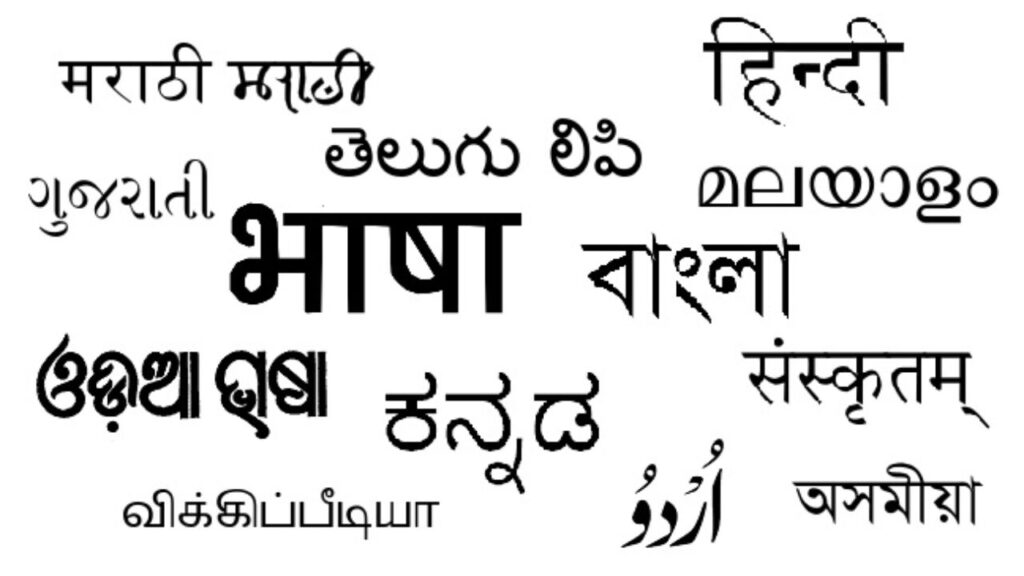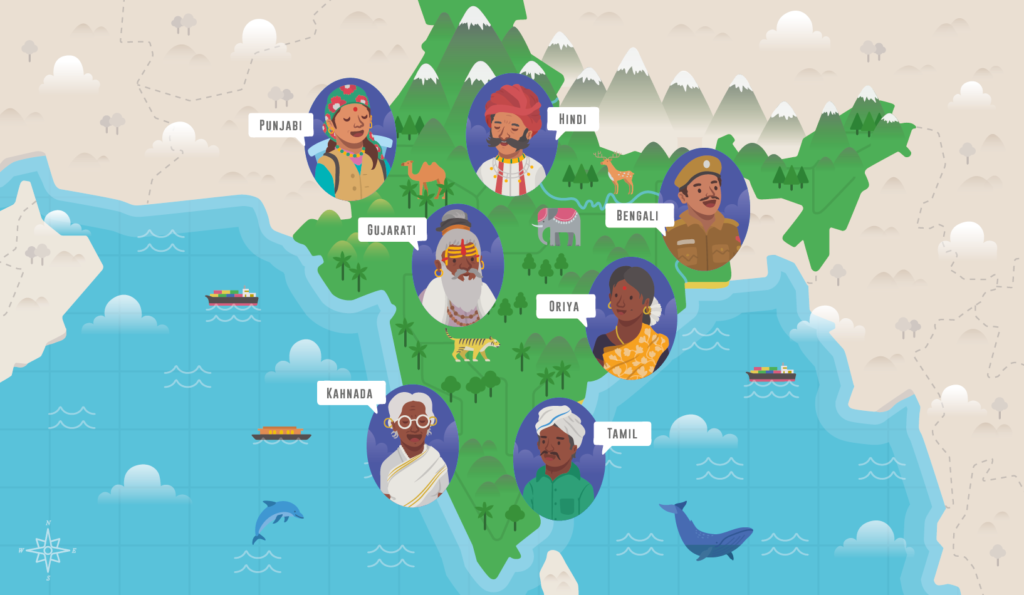India is a diverse country with 22 official languages and over 120 dialects. Hindi is the most widely spoken language in India, but it is not the national language. The Constitution of India does not designate any language as the national language, but Hindi and English are the two official languages of the Union.
This blog post will provide a comprehensive overview of the national language of India, covering topics such as:
- The history of the national language debate in India
- The factors that led to the adoption of Hindi and English as the official languages of the Union
- The role of Hindi in Indian culture and society
- The challenges of promoting Hindi in non-Hindi-speaking states
- The impact of English on the national language of India
- The future of Hindi in the digital age
- List of India’s Official Scheduled Languages
History of the national language debate in India
The debate over the national language of India has been ongoing since before independence. During the British colonial period, English was the language of administration and education. This led to a divide between the English-educated elite and the masses who spoke Indian languages.

After independence, there was a strong movement to promote Hindi as the national language. Hindi was seen as a symbol of Indian unity and nationalism. However, there was also resistance to Hindi from non-Hindi-speaking states, who feared that Hindi would be imposed on them.
The Constituent Assembly of India debated the national language issue for several years. In the end, it was decided that Hindi and English would be the two official languages of the Union. This was a compromise solution that was acceptable to both Hindi-speaking and non-Hindi-speaking states.
Also Read: Top 27 Most Spoken Languages In The World
Factors that led to the adoption of Hindi and English as the official languages of the Union
There were several factors that led to the adoption of Hindi and English as the official languages of the Union. One factor was the need for a common language for communication between the central government and the state governments. Hindi was chosen because it was the most widely spoken language in India.
Another factor was the need for a language for education and administration. English was chosen because it was the language of British colonial rule and it was already widely used in education and administration.
Finally, the adoption of Hindi and English as the official languages of the Union was also a reflection of India’s commitment to diversity. By choosing two languages from different language families, the Constituent Assembly made it clear that no one language would be imposed on the entire country.
Role of Hindi in Indian culture and society

Hindi is the most widely spoken language in India and it plays an important role in Indian culture and society. Hindi is the language of Bollywood films, popular music, and television shows. It is also the language of Indian literature and poetry.
Hindi is also used in education and administration in many parts of India. It is the language of instruction in many schools and it is used in government offices and courts.
Challenges of promoting Hindi in non-Hindi-speaking states
There are a number of challenges to promoting Hindi in non-Hindi-speaking states. One challenge is that there is a strong regional language identity in many non-Hindi-speaking states. People in these states are proud of their own languages and they do not want Hindi to be imposed on them.
Another challenge is that there is a shortage of Hindi teachers and Hindi-medium schools in non-Hindi-speaking states. This makes it difficult for people in these states to learn Hindi.
Impact of English on the national language of India
English has a significant impact on the national language of India. English is widely used in education, business, and government in India. It is also the language of the internet and social media.
The widespread use of English has led to a decline in the use of Hindi in some areas. For example, many Indians now prefer to use English in the workplace and in their social lives.
Future of Hindi in the digital age
The future of Hindi in the digital age depends on a number of factors, including the availability of Hindi content online, the development of Hindi language technologies, and the government’s policies to promote Hindi.
There is a growing body of Hindi content online, including news articles, e-books, and movies. This is making it easier for people to learn and use Hindi.
Also Read: 15 Most Spoken Languages in India by Number of Speakers
The government of India is also taking steps to promote Hindi in the digital age. For example, the government has launched a number of initiatives to develop Hindi language software and to make Hindi content available online.
The future of Hindi in the digital age is bright. Hindi is a vibrant and dynamic language with a rich cultural heritage. With the support of the government and the private sector, Hindi is well-positioned to thrive in the digital age.
National Language of India : List of India’s Official Scheduled Languages
| Sl. No | Language | Recognition in States |
| 1 | Assamese | Assam and Arunachal Pradesh |
| 2 | Bengali | West Bengal and Tripura |
| 3 | Bodo | Assam |
| 4 | Dogri | Language of Jammu and Kashmir |
| 5 | Gujarati | Dadra and Haveli, Daman and Diu, and Gujarat |
| 6 | Hindi | Andaman and Nicobar Islands, Bihar, Dadra and Haveli, Daman and Diu, Chhattisgarh, Delhi, Gujarat, Haryana, Himachal Pradesh, Jharkhand, Madhya Pradesh, Jammu and Kashmir, Mizoram, Rajasthan, Uttar Pradesh, Uttarakhand and West Bengal. |
| 7 | Kannada | Karnataka |
| 8 | Kashmiri | Jammu and Kashmir |
| 9 | Konkani | Dadra and Haveli, Daman and Diu, Maharashtra, Goa, Karnataka, and Kerala |
| 10 | Maithili | Bihar and Jharkhand |
| 11 | Malayalam | Kerala, Lakshadweep, and Puducherry |
| 12 | Manipuri | Manipur |
| 13 | Marathi | Maharashtra, Goa, Dadra and Nagar Haveli, Daman, and Diu |
| 14 | Nepali | Sikkim and West Bengal |
| 15 | Odia | Orissa |
| 16 | Punjabi | Punjab, Chandigarh, second official language Delhi, and Haryana |
| 17 | Sanskrit | Himachal Pradesh and Uttarakhand |
| 18 | Santali | Jharkhand and also Assam, Bihar, Chhattisgarh, Mizoram, Odisha, Tripura, and West Bengal |
| 19 | Sindhi | Gujarat and Maharashtra |
| 20 | Tamil | Tamil Nadu and Puducherry |
| 21 | Telugu | Andhra Pradesh, Telangana, and Puducherry |
| 22 | Urdu | Jammu and Kashmir, Telangana, Jharkhand, Delhi, Bihar, Uttar Pradesh, and West Bengal |
Conclusion
The national language of India is a complex and nuanced topic. There is no one answer to the question of which language is the national language of India.



